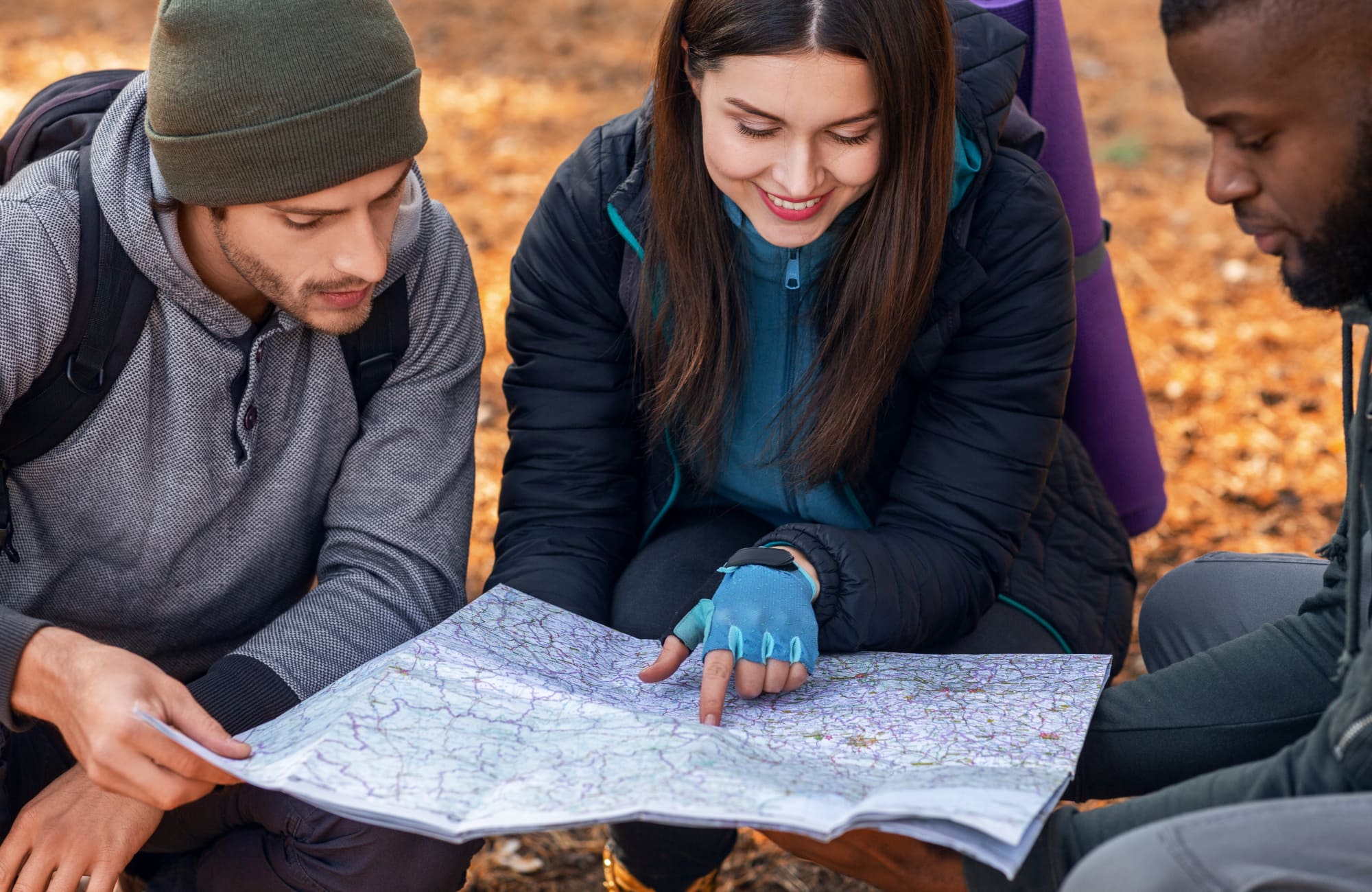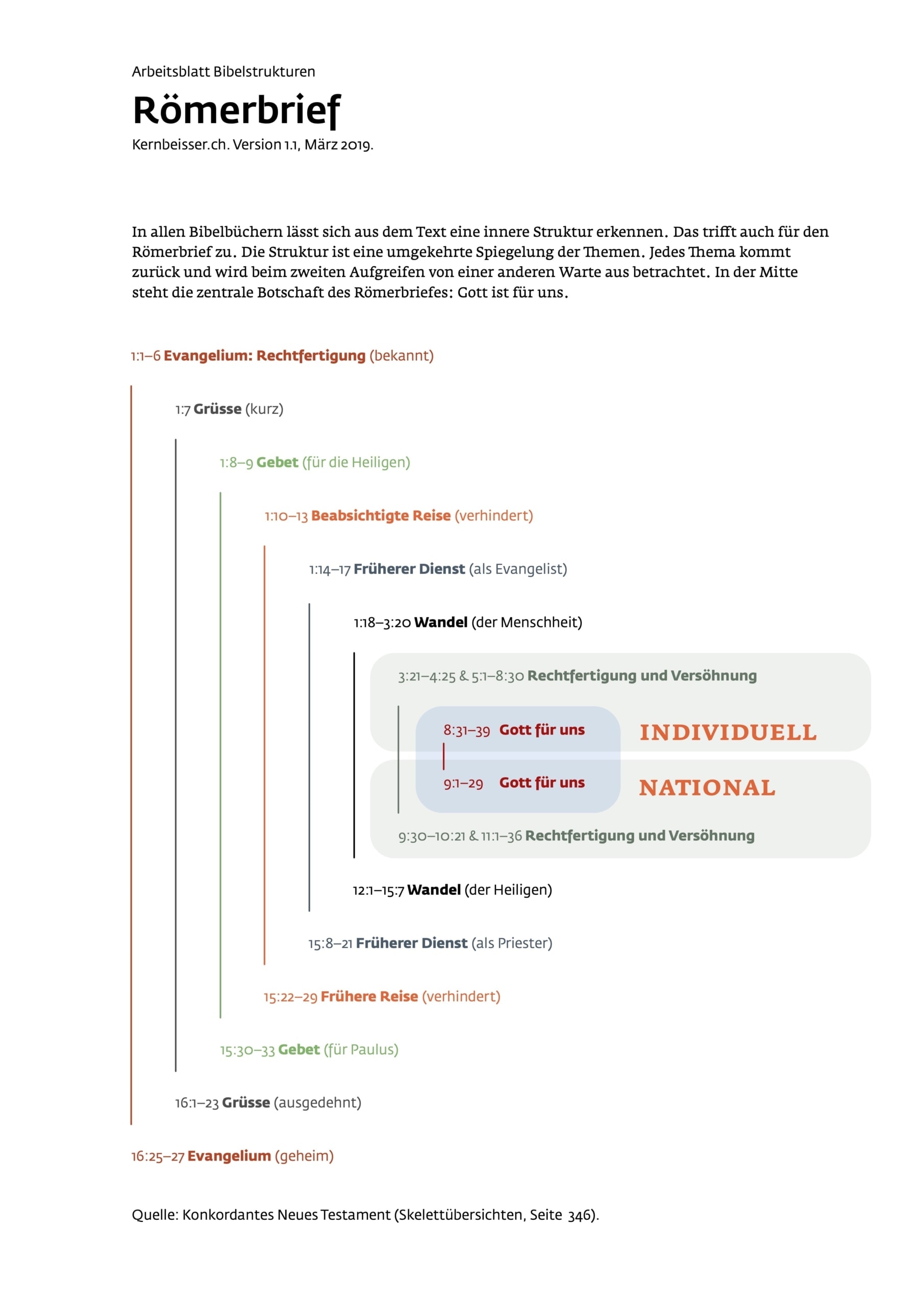In his letter to the church in Rome, the apostle Paul explained the gospel for 11 chapters. This is the doctrinal part of the letter to the Romans. We have just completed this part in this series. But now, in chapter 12, he turns to practical matters.
It is about our way of life, community and church in the last chapters. Of course, this is nothing new. This is about the impact and application of doctrine. Because teaching and change are mutually dependent. You could also say that you have studied the map so far and now you start the planned hike.
Let’s look again at the structure of the letter:
The worksheet on the structure of the Letter to the Romans can be downloaded as a PDF here:
The themes in Romans all come back again. The change of the saints is in direct contrast to the section on the change of mankind. However, the starting point for both sections is completely different.
Mankind as a whole acts on its own strength and considerations and misses the mark:
“For we accused both Jews and Greeks beforehand that they were all under sin.”
Rom 3:9.
But then comes the Gospel:
“But God demonstrates his love for us in that while we were still sinners, Christ died for us.”
Rom 5:8
This is the basis of radical change. Justification and reconciliation are now mediated by God’s action. We, who put our trust in it, can direct our lives differently. For this we are made free. This is the consequence of the teaching. It enables us to take the next steps out of a new freedom. From teaching it now goes to practice and both are from the same mold.
The teaching is like a map
Already in an earlier contribution (“Maps”) gauges were compared with maps. The map is not the country, and the internalized doctrine is still not the practical lived faith. Teaching, however, is like a map for hikers: a map is helpful in helping us find our way around the landscape. Likewise, a teaching is helpful to align our thoughts and actions for everyday life.
If you have a good map, you will find the way faster and easier. Of course, you have to learn how to use the map. This is also true for the Bible. Those who have planned the journey at home with the map, but then go out, must orient themselves with the map in hand and discover and walk the path step by step.
What do we need? It can be helpful to clarify a few things for yourself:
- Use the correct map and map section
(Today in the church we are from all nations, and we don’t read about them everywhere in the Bible.) - Even with a good map in hand, you can stumble
(We learn together and live by grace) - There are different map representations. Let’s choose the right one for today’s situation.
(Are we traveling on foot, by bike, by car? Do we just want to head for the nearest restaurant or be more active, build a raft ourselves to cross the next river? Likewise, you can choose Bible translations for the activity).

We stand at the threshold
We have just heard the teaching. Paul referred at length to the basics. Now, with this map, we are standing at the edge of the forest, so to speak, and looking into the forest. Now it’s a matter of applying what we’ve learned. The hike is ahead of us. We are on the threshold of the forest. Some joy of discovery may precede us. From here on, it’s all about the landscape, not just the map. As in real life, a map can only give an impression. If we go into everyday life, we must learn to prove ourselves. A map is a simplified representation of the landscape. We are on the threshold of practice, which will always be a little different.
We are also on the threshold of new experiences. Every hike is a little different, opens up new horizons and perhaps gives us unexpected encounters along the way. The joy of discovery is not only there because of the landscape, but also because of all the experiences we have on the way.


